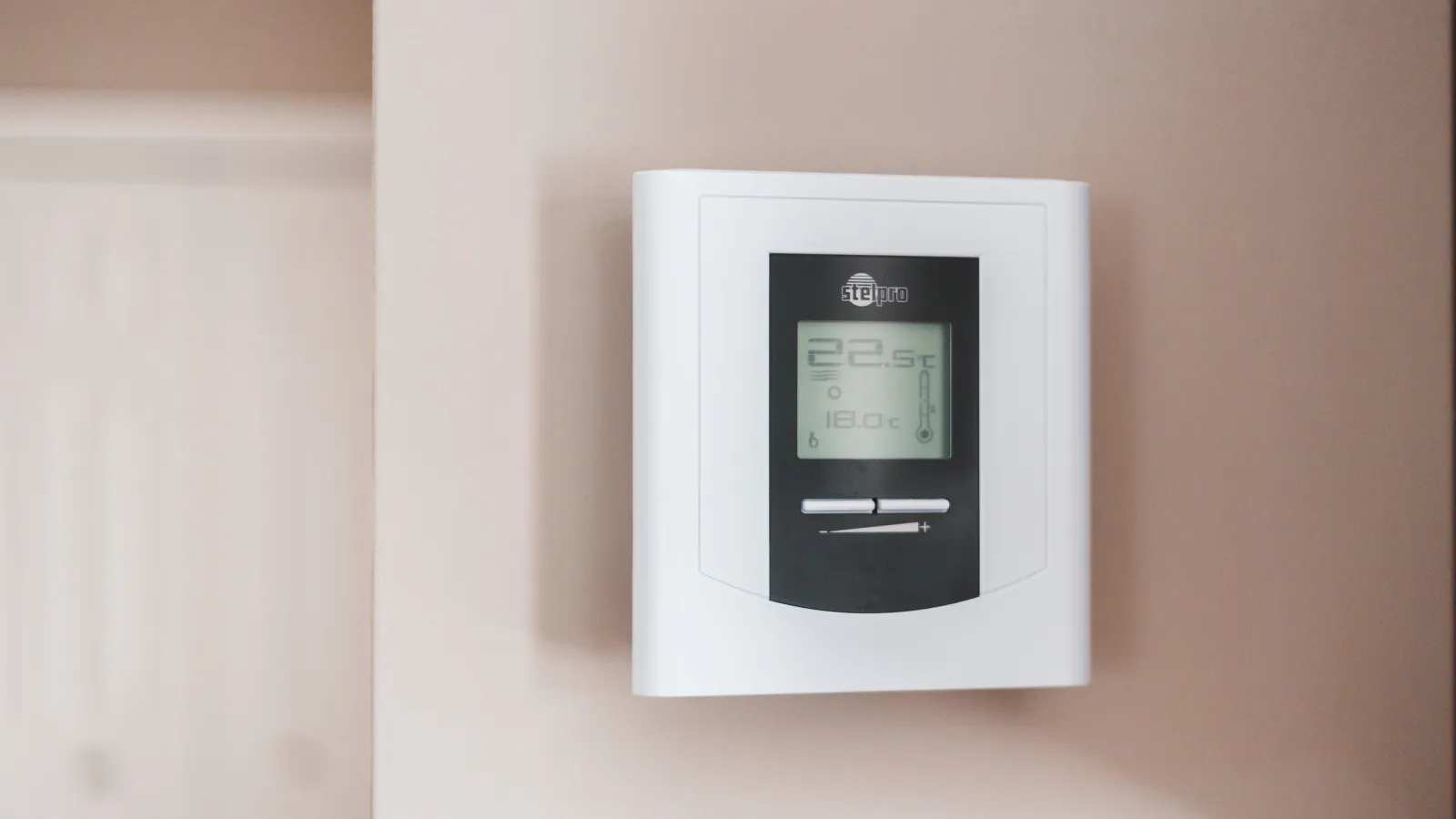What Is A Programmable Thermostat?

Do you
want to save money on your monthly bills? Are you looking to improve your
energy efficiency while creating a comfortable environment in your home? A
programmable thermostat can help you do so. Learn more about programmable
thermostats below and how your local HVAC
expert can help you find the right choice for your home and
design preferences.
What is a Programmable Thermostat?
In homes
with a manual thermostat, residents are responsible for adjusting the
temperature settings as needed. However, a programmable thermostat offers a
more convenient and energy-efficient way to manage the temperature of a home.
This type of thermostat lets homeowners set up programs to control and adjust
the temperature of their home. With a programmable thermostat, homeowners can
customize the run times of their heating and cooling systems, based on their
lifestyle, in order to save energy and create a more comfortable living
environment. Additionally, smart thermostats offer similar programming
potential but provide more enhanced functionality, such as their integrated
learning capabilities and operational convenience features.
How Does a Programmable Thermostat Work?
After installing a programmable thermostat, homeowners set up programs where they can choose the days and times for the furnace or air conditioning to run, as well as the preferred temperature. Instead of running out the door at 7 a.m. for work only to have to go back inside and adjust the thermostat for the day, a programmable thermostat will have this environmental and energy management covered! Whether you want to turn the heat down when you are away at work or during your sleeping time to cut back on energy usage, you can set a programmable thermostat accordingly. Similarly, you can program your thermostat to turn on an hour or so ahead of wake-up or return time in order to make your home a more comfortable temperature for preparing for the day or enjoying your time at home.
In
addition to day and time-oriented temperature programs, smart thermostats
provide even more functionality. For example, smart thermostats "learn"
occupants' habits and adjust temperatures accordingly. On days that are
particularly cold or hot, they can also account for these conditions and adjust
as needed. Often, this type of programmable thermostat can be managed with a
smartphone app and allows residents to monitor the home's interior conditions
while at home or away. In addition to convenience and growing insight into a
home's heating and cooling operations, smart thermostats typically offer both
reports on energy consumption and notification of HVAC maintenance timing
or unanticipated system issues.
How to Determine the Best Programmable Thermostat for Your Home
As the selection of programmable thermostats at Home Depot reflects, there are many options available. Consequently, to ensure that you make the best selection for your home and your preferences in managing your indoor environment, it is helpful to consult with the HVAC company near you, such as the Snappy Services team. To choose the best programmable thermostat for your home, here are key points to consider:
- Ease of use: To enjoy the benefits of your programmable thermostat, it needs to be easy for you to use. For some homeowners, that ease may be through the use of a voice assistant, while others may prefer to simply set their system and count on their programmable thermostats to adhere to that program.
- Compatibility: Not every programmable thermostat works with every type of heating and cooling system. Given the nuances of each household's unique needs and system configuration, accessing the expertise of a professional heating and cooling company is beneficial!
- Programs: Different programmable thermostat models allow you to set one or more programs per day. For example, you might design a schedule for each day of the week or the week in its entirety. On the other hand, you may prefer split scheduling options by breaking the week into a 5-2 set-up for weekdays and the weekend or a 5-1-1 plan in which the weekend days can each have a respective approach. In addition to various program options, many smart thermostats can also learn your preferences and heat, cool or maintain accordingly based on the data collected about your usage.
- Cost: A programmable thermostat itself ranges from as little as $30 to around $300, along with varying installation costs. For example, if new wiring is needed or a thermostat is to be relocated, the total expense of this addition may increase. However, the U.S. Department of Energy estimates that homeowners can save 10% off of their yearly bills by programming according to their recommended temperature settings. Additionally, as per EnergyStar.gov, rebates may also be available on a smart thermostat.
- Design: In addition to multiple shapes, sizes and color options, homeowners can choose from a variety of aesthetic and functional features. From touchscreens and backlit displays to built-in Wi-Fi or Bluetooth to Vacation Mode and Daylight Savings Time Ready selections, many of the best programmable thermostats feature a variety of helpful features and can blend seamlessly with existing decor or further align with modern styles.
Programmable
thermostats are a beneficial home improvement that can make life easier and
more comfortable for you. To save you both energy and money, a programmable
thermostat is a smart investment for any home. For help selecting and
installing the best programmable thermostat, contact
Snappy Services today! Our award-winning
team offers HVAC,
plumbing and electrical services and is also available to
help you in the event of a home
emergency, such as a water leak or a broken furnace!

